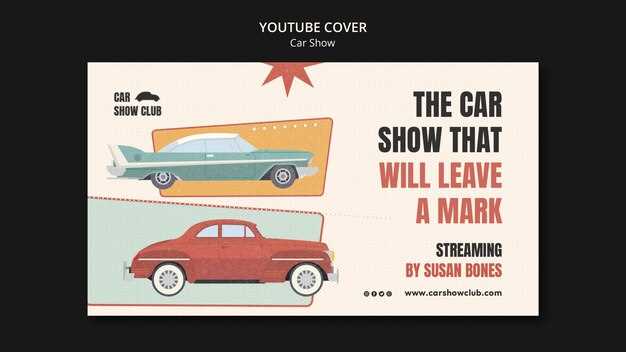
Owning a classic car is more than just a passion; it’s a commitment to preserving automotive history. However, the journey of acquiring and maintaining a vintage vehicle doesn’t end with the purchase. One of the crucial steps in this process is understanding the intricacies of registration and titling. These steps ensure that your cherished classic is legally recognized and protected.
The registration process can often seem daunting, especially for first-time classic car owners. Each state has its own rules and regulations that must be navigated. From gathering documentation to understanding fees and deadlines, ensuring that you have a smooth registration experience is paramount. In this guide, we will break down the necessary steps, making the process as straightforward as possible.
Additionally, titled vehicles have specific valuation methods and rules, which may differ significantly from modern cars. Understanding these differences can not only save you time but also enhance your vehicle’s overall value. In the following sections, we’ll explore everything you need to know about registering and titling your vintage car, ensuring you can hit the road with confidence and pride.
Understanding Vintage Car Registration Requirements

Registering a vintage car can be straightforward if you understand the requirements involved. Each state has its regulations, but there are common steps you generally need to follow.
- Determine Eligibility: Vintage cars often need to meet specific age criteria, typically 25 years or older. Check your state’s definition.
- Gather Documentation: You will need to collect various documents, including:
- Title of the vehicle
- Proof of ownership
- Bill of sale (if applicable)
- Previous registration documents
- Identification and proof of residency
- Complete Registration Form: Fill out your state’s vehicle registration form accurately.
- Emissions and Safety Inspections: Some states require vintage cars to undergo inspections. Verify requirements with your local DMV.
- Pay Fees: Be prepared to pay registration fees, which can vary widely by state and the car’s value.
- Visit the DMV: Submit your completed forms and documents at your local DMV office or use online services if available.
After completing these steps, you should receive a registration and title for your vintage car, allowing you to enjoy driving your classic vehicle legally.
Step-by-Step Guide to DMV Paperwork for Classic Cars

Registering your classic car involves a series of essential steps to ensure smooth processing at your local DMV. Understanding the paperwork and requirements will make the process efficient and hassle-free.
1. Gather Required Documentation
Before heading to the DMV, collect all vital documents. You will need:
- Your classic car’s title proving ownership.
- A valid identification, such as a driver’s license.
- A completed registration application.
- Proof of insurance complying with state regulations.
- A bill of sale, if applicable.
2. Verify Classic Car Status
Ensure your vehicle meets your state’s definition of a classic car, often based on age, condition, and style. Some states may offer specific classic car plates which can affect registration fees.
3. Visit Your Local DMV
Look up the nearest DMV office and plan your visit. Check if appointments are necessary, as some locations require you to schedule ahead of time.
4. Complete the Registration Form
Fill out the registration form accurately. Double-check all information related to your classic car, including VIN, make, model, and year. Inaccuracies may delay processing.
5. Pay Applicable Fees
Be prepared to pay a registration fee. This cost can vary depending on your state’s policies and whether you are applying for classic plates. Keep a copy of the payment for your records.
6. Submit Your Paperwork
Once you have completed the form and gathered your documents, submit them to the DMV representative. Make sure you retain copies of everything you submit, in case of any discrepancies.
7. Receive Your Registration
Upon successful processing, you will receive your registration and, if applicable, your classic car plates. Ensure everything is accurate and keep your registration in a safe place.
8. Maintain Records
Keep all paperwork related to your classic car, including registration, title, and any correspondence with the DMV. This documentation is crucial for any future transactions or inquiries.
Following these steps will simplify the registration process for your classic car, ensuring that you enjoy cruising with peace of mind!
Tips for Maintaining Value with Proper Titling
Proper titling and registration are crucial for preserving the value of your vintage car. To begin with, ensure that all paperwork is accurately completed when registering your vehicle with the DMV. Any discrepancies can lead to complications in ownership that could affect market value.
Keep all original documents related to the car’s title and registration in a safe place. This includes the original title, any transfer documents, and records of past registrations. Buyers often seek vehicles with a complete history, and having these documents readily available can enhance the perceived value of your classic car.
Regularly check the registration status with the DMV to ensure there are no outstanding issues. An expired registration can be a red flag to potential buyers and may lead to lower offers. Additionally, renewing registration on time helps maintain the vehicle’s legal status and further instills confidence in future purchasers.
Consider obtaining a title search, especially if you have purchased the car recently or if it has changed hands multiple times. This process verifies the history of ownership and can reassure potential buyers of the title’s legitimacy. A clear title protects both you and the potential buyer from future claims.
Lastly, be aware of any state-specific requirements regarding vintage car registration. Some states offer special plates or title types for classic vehicles, which can add desirability and value. Adhering to these specific regulations not only makes the registration process smoother but also highlights the car’s uniqueness to collectors.




